Tomarata has her heart
network and often encourages people interested in a small rural school for their children to pop along and see what they do. Sharing her memories of days gone by with her students is often met with amusement and delight.








Tomarata has her heart
network and often encourages people interested in a small rural school for their children to pop along and see what they do. Sharing her memories of days gone by with her students is often met with amusement and delight.







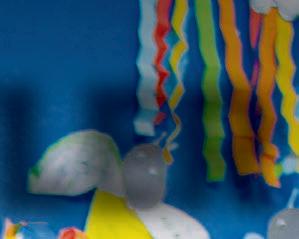










THE WEEKEND LIFESTYLER IS PUBLISHED WITH PRIDE BY INTEGRITY COMMUNITY MEDIA, A PRIVATELY OWNED NORTHLAND COMPANY.
Phone: 09 439 6933 or 0800 466 793 Email: info@integrity.nz

Postal Address: PO Box 474, Dargaville Physical Address: 107 River Road, Dargaville



Editor: Deb Wright 021 639 696 deb.wright@integrity.nz

Journalists: Ann van Engelen | Liz Clark
Advertising: Ruth Webb 027 525 9172

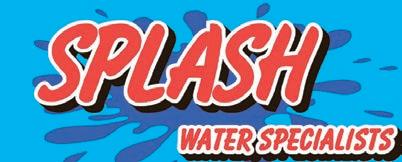

Production: Gavin Bainbridge | Anna Fredericksen | Kelsey Harrison | Liz Clark
Accounts: accounts@integrity.nz

Distribution: Laurie Willetts
7,780 copies, distributed on Friday to every residential and rural home throughout the district including Whangārei, One Tree Point, Ruakākā, Waipū, Mangawhai, Kaiwaka and Wellsford.
Ruakākā School is hosting the local Te Hui Ahurei o Matariki celebrations with Bream Bay College, Ruakākā, Waipū and One Tree Point schools participating in the community event.


“Each year, a different school hosts the celebrations,” says Kāhui Ako across school leader Alex Murrie.
“We also have seven of our early childcare centres join us. Matariki is a celebration of the new year for Māori. It is a cluster of stars, and when they appear in the sky around June, it is time for many things like harvesting and starting to store food for the winter.
“We have a lot of Māori tamariki in our schools, and it’s really important for them to connect with their history and ancestors. Every star in the cluster has a meaning, and it’s important for them to learn the meaning of each star and what it means to them.”






The cluster of stars is also known as the Pleiades or the Seven Sisters. NonMāori also enjoy learning the importance of Matariki.
“We celebrate with songs, performances, food and being together with others in the community. It is our only holiday in New Zealand apart from Waitangi Day that celebrates Māori history, and it is for all New Zealanders, although the history is about tradition.
“Approximately half of the tamariki in each school have joined kapa haka because they love it so much. Each school has a tutor or tutors, and the costumes are often outsourced from Māori people who have businesses making clothing for kapa haka because

in our schools, we like to support Māori as much as possible.
“Our community is small, and everyone is welcome to come along. Each school presents kapa haka performances, and the tamariki celebrate the successes of each group. The early childhood centres also perform their part, and we have lots of kai available for sale.
“The Matariki festival is from 3pm–7.30pm on Thursday, June 29, at Ruakākā School, 12 Sandford Rd, Ruakākā. In case of bad weather, we have a backup date of Thursday, July 27.
“There are events happening around the district with some people doing a hāngī and others doing larger events. No matter what people do, it’s great to see communities in Aotearoa embracing Matariki.”
Kaiwaka Can and Kaiwaka School are celebrating with a Lantern Parade on Friday, June 30, starting at the school at 5.30pm and ending at Eutopia Cafe around 6pm.
Tehana Te O Marama are celebrating with a hāngī on Friday, July 14, served at 1pm — dine in or take away. A hāngī is $15 a pack. Phone 09 423 8701 to place orders or for more information.
Te Whai Community Trust Mangawhai is celebrating Matariki on July 14 with hāngī, korero and various other activities on Friday, July 14, from 1–5pm at Te Whai Community House, 73 Moir Street, Mangawhai. ¢
“Approximately half of the tamariki in each school have joined kapa haka”
We also stock MIG wire, cutting discs and welding rods. Steel cut to length.

The Promote Waipū committee is preparing for the Waipū Winter Festival with a month of activities to bring people from the local community and beyond together.
“We have revamped the Winter in Waipū festival,” says Promote Waipū chairman Peter Gibb.

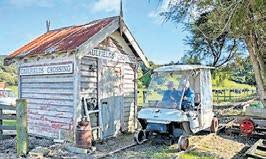
“I moved to the area from the Bay of Plenty six years ago and love it here. There are around 20 support clubs here and I joined Promote Waipū to give back to the community by helping organise these events.

“We are finding the population is changing with more young families moving here. These people are the future of Waipū and at this time of year, we want locals to enjoy activities together as well as bring people in from other areas.”
Peter says Promote Waipū believes in promoting the town as a whole.
“We have many cultures in the area, including our local iwi, people of Scottish heritage and others from around New Zealand and beyond. We promote


from the Waipū Caves to the coast and everything in between to encourage our community to get out and enjoy our heritage.
“For the winter festival, we have a great community spirit and want people from other districts to join us with friends and family.”
The 2023 Waipū Winter Festival starts on Saturday, July 1, at the North Pine Tartan Race Day at the Ruakākā race track.

“It is free entry and Scottish-themed entertainment, including a pipe band playing, and people will dress up for the day. On July 5, we have the great debate happening at the Waipū Hotel debating whether living in Waipū for five years is long enough to be called a resident.
“Saturday, July 8, is the winter ball at the Coronation Hall, and it promises
to be a great night with professional decorators booked to decorate the hall accordingly. On July 10, we are holding a Scottish Country Dancing Ceilidh with old-fashioned dances like the Gay Gordons.
“The Pizza Barn is hosting our traditional Beer and Bites night on July 11. For this event, we match beer to six local foods and have a conversation around the matches. We have a weaving workshop as part of Matariki on July 15 and the Tartan Teams Ambrose Golf Tournament on Sunday, July 16, at the Waipū Golf Club.
“July 22 sees the annual pet parade with pets and their owners dressing up and walking through the town centre to the vet clinic. The pet parade is always an amusing event, and this is followed by our midwinter swim on July 23 at Waipū Surf Club starting midday.
“We would love to see people of all ages come along and have a dip. We hope people get out and about and enjoy the community spirit of Waipū this winter.”
To book tickets and for more information — go to promotewaipū. co.nz.



People of all ages can now enjoy roller skating every Friday from 4.30pm–5.30pm at the Wellsford District Community Centre.

“It doesn’t matter what experience you have or how old you are — we want to see people come along and have fun,” says organiser Riana Waenga.
It is a gold coin donation to help cover hall hire, and skaters need to provide their own skates, and knee and elbow pads for safety.


“I started the event because my son loves skating, and it is becoming popular with youth. We hope to get more kids



If you need a relief carer for yourself, or time away from caring for a loved one, I offer 24 hour care for 1-3 day periods (other time frames negotiable).
I have 13+ years of experience in elder care, covering a full range of requirements and health issues, from companionable oversight to end-of-life care.


Please contact me by email margbrowne13@gmail.com (prompt response) to arrange a chat about possibilities & options, or leave a message on mobile 029 0203 8622


margbrowne13@gmail.com



in the community involved as it is a lot of fun and something that doesn’t cost too much to do. We will also have cheap snacks available on-site.
“Skating is really good for fitness as it helps with cardio and builds up muscle while improving reflexes. It also helps with fine motor skills because you have to work on your balance and coordination to hold yourself up.
“You can go around in circles and do basic skating or do turns, flips and tricks if you are more advanced. It is lots of fun for everyone and a great way to spend time with friends and meet new people.
“I have fond memories of using the old metal skates that you strapped on to your shoes as a child. They hurt your feet after strapping them, but back in the day, they were quite expensive for us, and we used to share them with each other. It was so much fun.
“We don’t have rails to hold on to in the hall, but you can use the stage to help you hold up, and parents are welcome to walk beside their child to assist them up. Our more experienced skaters are ready to help the less experienced or learners, as well, which is really nice.
“With the random weather lately, being indoors means we can still enjoy time together, rain or shine, and we have a really good playlist of music. To us, it is
important to use our community spaces together, and after skating, youth in Year 7 and above can pop over to the Purpose for Youth group at the railway station. It can also be used as a warm-up for netballers, which is at the Centennial Park courts on the same night.
“We don’t have major rules. It’s all about coming along to skate and having fun for an hour. Having the Purpose for

Youth group is making life more positive for our youth, and skating goes hand in hand with people connecting together.
“It’s also a good opportunity for the older children to help the younger, and grandparents come with their grandchildren. It is all about using our village to our advantage and getting our youth to contribute to society in a positive manner.”
We take pride in producing quality work at all times and at every stage of your project and working within agreed budgets.






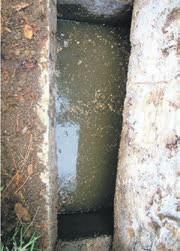
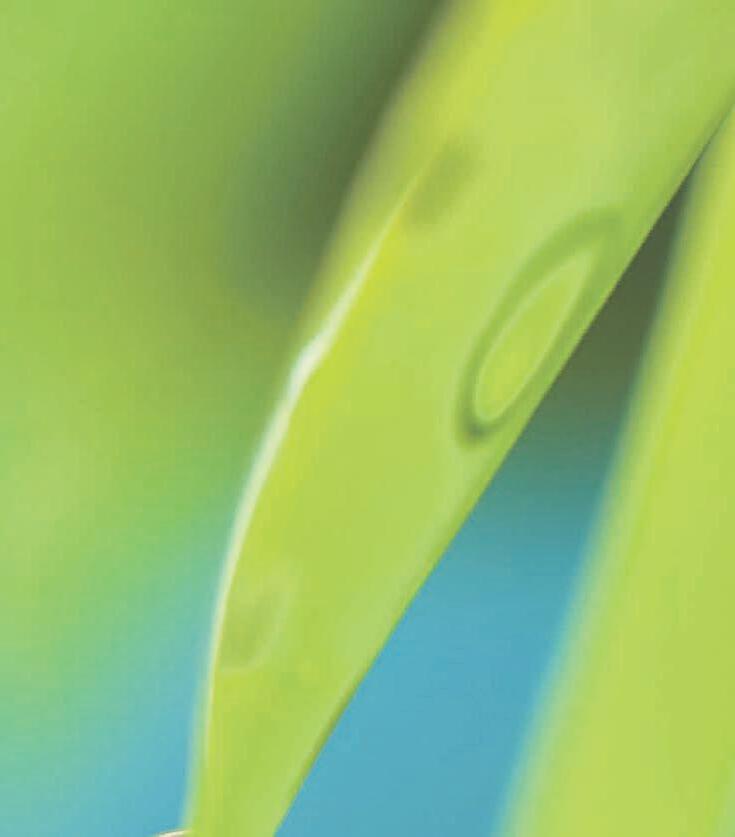
Our goal is to deliver personal service to you at all times. Consulting with you and working with you to ensure your desires are met throughout the building process to the best of our abilities.

Ruakākā couple Rodney and Danni Hang have added to their business adventures by reopening the butcher shop in Waipū.

“We moved to Ruakākā in 2012 to slow down and have our family,” says Danni.
“We arrived with one daughter and now have five children. We own the Country Bake bakeries at the Ruakākā Town Centre and Marsden Cove and Head Rock Bakery Mangawhai. During Covid, we discovered the supply of products such as flour was a problem and found other small businesses and people had the same issue.”
Danni says small businesses rely on supply upon demand, and they need immediate access to products.
“No one up here held stock, so we decided to help ourselves and other small business owners and started the
NZ Food Depot. Initially, it was at the back of the Ruakākā laundromat, but we have now moved to bigger premises and supply other small bakeries, takeaways and lunch bars.
“Meat was one of the other things we were struggling to buy without having to get bulk orders from Auckland, so we decided to look for a butchery to provide wholesale meat to our clients. We didn’t want to look too far away from home, and the Waipū Butcher Shop at The Centre became available, so we do our wholesale from there as well as open to the public and pass on savings.
“Our butcher Dave Martin owned the Aussie Butcher for 20 years, and he
and his wife, Shelley have been a great help to get us started. We have a new butcher starting in the near future as well. At present, we have beef, chicken, lamb and pork and we have a deli going in soon.
“We all believe it is important to bring the costs of business down to the people we supply. At the butchery, we are going to see what else the public wants us to stock so we can try to keep everyone happy, but we know everything takes time.
“I arrived from Cambodia as a refugee in 1989. We were refugees, and my dad has been doing food businesses ever since. I am a baker and could bake day and night and look after our

kids because that is where we come from, and we know the struggles people have.
“Rodney and I are loving it here — I don’t know anywhere else I would rather be. We are five minutes to the surf beach, five minutes to the other beaches, and everyone knows everyone. It is the same in Waipū. People coming into the butcher shop have been our customers at one stage or another.
“For us, although business is important, our family is our top priority, but Rodney is a man, who when he sees a need for something, he will do what he can to help to secure supply for small businesses besides ourselves.”
With a proven product designed and fabricated for the marine environment that is our front yard, we are a local business that specialises in building functional outdoor living spaces.

The amazing panels block out the UV and reduce the transfer of heat up to 40% without losing light into your living areas.
Add vertical glazing and/or blinds to further enhance your new space. Based in Bream Bay, we cater to enquiries around Northland and have plenty of clients who are willing to showcase their structures to interested parties.



Get in touch, to find out how we can create a beautiful outdoor room at your place.
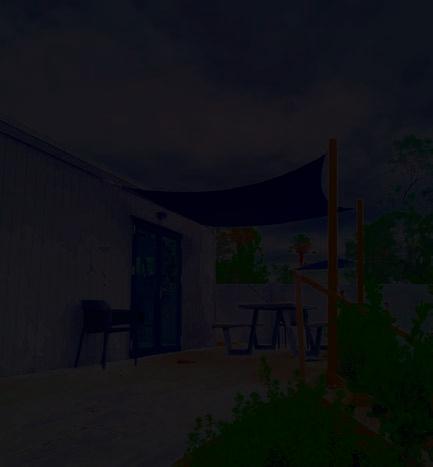

During the colder months and shorter days, finding something to colour up the garden or indoors with flowering plants isn’t as hard as it seems.

The daisy-like blooms of the cineraria and the range of colours the plants come in provide that touch of colour inside and out. Easily grown from seed or purchased from the garden centre, these delightful annuals will colour up any garden or decore during winter.

Cinerarias thrive in fertile, welldrained soil, preferring full sun with partial shade. They are tolerant of light frosts, however, in areas with heavy frosts, plant under trees for best protection. It takes up to eight weeks before the plants flower — the wait is well worth it. Colour up around the base of established trees
and shrubs with cinerarias as a focal point when the garden is otherwise dull and lifeless. Plant spacing should be done according to the height the plants will grow to. Nurseries now produce a broad range of colours and cultivars, from dwarf to tall varieties. For pots and hanging baskets, use a suitable free-draining potting mix to place your plants into. The pots should have plenty of draining holes to prevent any waterlogging. While cinerarias like to be well watered, caution should be taken during the colder months. Keep the potting soil moist but not soaking wet; otherwise, the plant will die from root rot.
Place your potted cinerarias where they can access good light, preferably in an area near a window. Liquid feed regularly to maintain plant vigour and blooms. Deadhead any spent flowers and remove dead leaves from the plant as they brown off.
With a vast range of colours available at garden centres, these delightful flowering plants will provide that much-needed change against the winter grey. Consider varieties such as Blue Shades, Red, Grandiflora and Silverdust as a starting point to brighten up the garden. Look online or visit your local nursery for more options. ¢

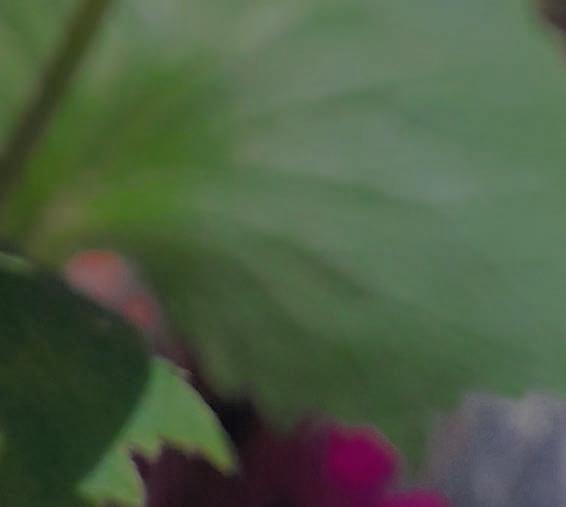









 u by Liz Clark
u by Liz Clark
















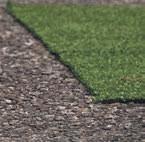


Last Sunday, the Mangawhai Opera Lovers Film Festival launched with Franco Zeffirelli’s 1982 masterful retelling of Giuseppe Verdi’s 1853 opera La Traviata (The Fallen Woman).


Opera-goers enjoyed a treat of nonalcoholic bubbles and snacks before the start of the film, held in the Mangawhai Movies theatre at the historic village by the museum. John Phillis, resplendent in his red bowtie, manned the ticketing counter while Belinda Vernon and Stuart Thompson welcomed 36 people into the venue.

Organiser and confessed ‘opera nut’ Stuart gave an introduction to the story behind the well-known opera, based on the life of courtesan Marie Duplessis and her affair with author and playwright Alexandre Dumas. Dumas penned the 1848 romantic novel La Dame aux Camélias (The Lady of the Camellias) and later adapted it into a play — the inspiration for Verdi’s tragic tale.
The Academy-Award-winning film features Verdi’s continuous orchestral score performed by the Metropolitan Opera Orchestra and Chorus, bringing a dynamic and scene-setting compositional narrative throughout.

Soprano, Teresa Stratos, brings a dazzling performance as Parisian courtesan Violetta Valéry. Her expressive diction and octave range in her arias were spellbinding and acting more than convincing that she was the woman at the centre
of a tragic romance. Outstanding tenor Plácido Domingo plays her love interest Alfredo Germont. Domingo brings an emotional and powerful performance as the young nobleman who had fallen in love with Violetta from afar and then becomes her lover.

The couple then move away from the Parisian social scene to an estate on the city’s outskirts. However, it all begins to unravel when debts and a visit from Alfredo’s father Giorgio, played by baritone Cornell MacNeil, persuade Violetta to give up her romance with his son. During his encounter with Violetta, MacNeil’s mastery of voice and diction easily convinces the audience that he is sincere in his concern for his character’s son. The underlying orchestral score in the staccato-like tempo perfectly complemented his particular solo in the second act. The ending is, of course, that of lost love and Violetta’s tragic ending.
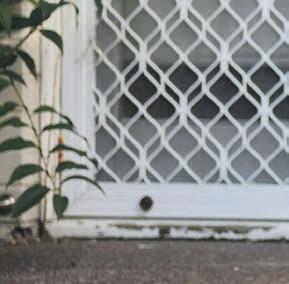

Supported by an outstanding operatic cast and chorus, La Traviata is brought to life with stunning indoor and exterior sets bringing the viewer into the intimacy of the tale of two lovers and those around them. Zeffirelli made opera accessible to a mass audience with this masterpiece of cinematography, combining music
and storytelling into an entrancing 105 minutes in three acts of pure operatic bliss. This film is for everyone.





 u by Andy Bryenton
u by Andy Bryenton

Every home in Finland has one, and many other European countries have followed suit, making the sauna one of the hottest trends in bathroom design, both figuratively and literally.

Whether it’s for the refreshing sensation of relaxing in the warmth and steam of a wet sauna or the health benefits of ‘sweating out the bad stuff’ in a dry sauna before bathing, the old tradition is alive and well after a resurgence in the 1980s. How old? Well, the sauna dates from pre-mediaeval Scandinavia and was used to replace taking a bath in those latitudes where winter grips the land with temperatures of 30 degrees below zero or more.
In such frosty climes, taking a plunge into water was not very welcoming, and an alternative was adapted from the ‘sweat lodges’ ancient shamen used to aid in their meditations. It was so common for the people of Finland, Norway and Sweden to enjoy this form of relaxation and cleansing that one of the biggest pieces of evidence pointing to Norse occupation in Greenland and coastal Nova Scotia was the presence of burned sauna stones.
In the Finnish language of Suomi, sauna originally meant a little wooden hut, and that’s the form that outdoor saunas still take today. However, after the second world war, saunas began to be incorporated into new apartment buildings and terrace houses, brought indoors as a small room lined with wooden panels.

It is the basis for many interior design choices today. An indoor sauna can be purchased as a single unit and installed free-standing. Still, it’s more aesthetically



pleasing for many to have their sauna adjoin the bathroom, with its own door and its own separate ventilation system. Indoors, it’s rare for a sauna to cleave to the traditional ideal of heating rounded stones with a wood fire. Many modern




saunas are electric for this very reason. Be careful to check that your chosen sauna can accommodate the traditional use of water to create soothing steam; some electric saunas, due to their mode of power, are ‘dry’ heat only.

The home sauna fits well with the body consciousness which pervades those nations first established by Britain. Privacy in what is seen as a bathing environment is a societal norm. However, in Eastern Europe, large communal saunas exist where nakedness is not remarkable; the biggest, Czeladz, Poland, holds 300 guests and screens feature films amid the steam.
To enjoy the healthful and relaxing benefits of a sauna in your own home, experts suggest a bathroom renovation that relocates the toilet from its own tiny room to within the master bath area, or deleting an en suite. That provides just the right small space for a private sauna you won’t have to share. ¢


































Toilet building at your cost. These toilets are the good looking, sensible answer to human organic waste management. Environmentally friendly, they are economical easy to install and require little maintenance
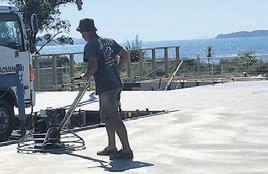


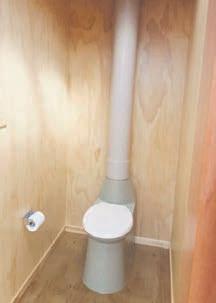

Toilets are vented so there are no unpleasant odours, no need for toilet cleaners or room deodoriser. They meet all required NZ Standards and building codes and are in use by DOC and regional councils. Cheaper to purchase and install compared to other systems, right from the start. You can leave the system to work for you and in the end will have safe, composted material that can be used in your gardens


Great for you and Better for the planet!





Better hygiene, a huge saving on your grocery bill and a boost for the environment combine to make the convenience of the bathroom’s ‘other convenience’ a serious consideration for renovators.




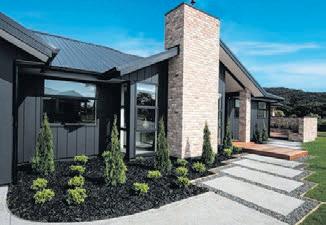
Since 1975 it’s been a mandatory part of bathrooms in places like Italy and Portugal. Despite being popular, since before the French Revolution, the concept of the bidet is only just becoming a bathroom trend in New Zealand. Whether it’s a stand-alone unit like those you may have seen in hotels or on your foreign travels, or a device replacing your usual lavatory seat, people are switching on to the benefits.
People from cultures which swear by the bidet, places like France, Italy, Argentina, Egypt and Spain, for example, insist that it’s just a matter of cleanliness. If you wash your hands with water, they would opine, washing elsewhere with water, especially if it’s warm and soothing, is common sense. They may have a point. Studies prove that the bidet does work better than the toilet paper it replaces.
Then there’s the impact on the environment. Each usage expends only about half a litre of water, less than the amount used to cultivate the amount of paper necessary for the same operation.
Scientific American magazine crunched the numbers and estimated that a switch to bidets by the majority of US


citizens would save 15 million trees each year. Bidets would also get rid of wet wipe towelettes flushed into the sewers. Those who like the extra cleanliness and comfort of the wipes are natural bidet adopters in any case.


The big benefit of the bidet comes from its ease of use. Older folks, especially those with mobility or balance issues in later life, can be self-reliant for much longer with the assistance of this kind of technology. Gerontologists recommend the fitment of an add-on
bidet for many of their patients to enable them to live at home longer.




The French may have invented the bidet, but it’s the Japanese who have brought the device to the forefront of technology. While the option to install a heated replacement lavatory seat unit or a stand-alone porcelain fixture is the limit of your options in New
Zealand, in Japan, bathroom science has delivered conveniences that play music, automatically perfume the air, and give options for cleansing sprays at different temperatures, with a range of scents, or even a follow-up puff of talcum powder.
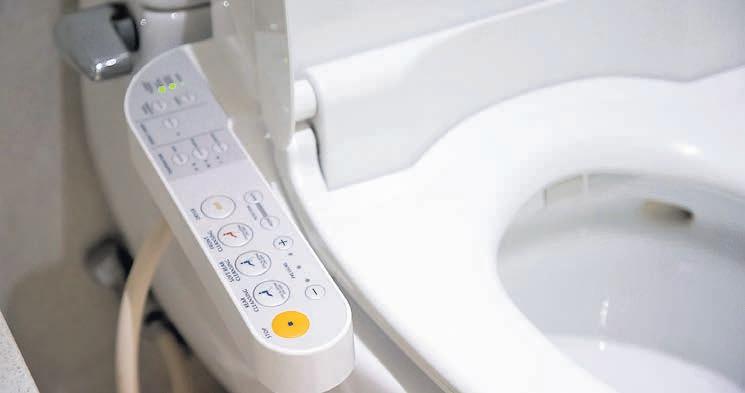
As Tomarata School is preparing for its 90th jubilee, Mrs Barbara Bartlett, fondly known as Mrs B, is celebrating more than 40 years of teaching at the school.

“I grew up in Wellsford as a Danks and have seen many changes to the school and area over the years,” says Barbara.
“My dad was a stock agent, and my mum worked in different things, including retail. I went to Wellsford School and Rodney College and applied for teachers training college when I left school but I was told that I was too young, so I did a secretarial course because I never did typing at school.
in 1982, someone told me of a teaching position at Tomarata School.”
Mrs B didn’t know there was a school at Tomarata and had to ask her dad if it existed.
“When I finished the course, I set up at the Auckland Chief Post Office. One day, a letter arrived asking if I’d like to become a teacher, so I started my three years of teacher’s training on the North Shore when I was 18 years old.
“Back then, you had to do three years of practical training in a rural school, so I applied for Wellsford because I was getting married once college finished. I was accepted and came home, but after my training I was jobless until one day
“Dad brought me out on the dirt roads to see it. At that stage, it wasn’t a permanent job, and when it did become permanent, I initially wasn’t chosen. The day after I was told I didn’t get the placement, another lady left, so I was given her job, and 40 years later, I am still here.
“You don’t realise how fast life flies by. I have seen all the changes happen from it being a main building with classrooms in it and two prefabs to the eight classrooms and the hall that we have now. I taught in the standards and then Year One/New entrants — this year, I have Year Two.
“The school has a loving family atmosphere with a lot of community
support. Originally, the whole community was farms, and it was all local family names and I still know those names even though many of the properties were sold. I have seen many staff come and go, and I am now teaching children of children I taught years ago and find that very rewarding.
“Originally, there would be new principals every two years as they would come to learn and then move on.
Eventually, we had principals stay longer, and that made it easier. We welcomed our newest principal Chris King and his wife, Victoria, at the beginning of the year and they are lovely.”
Barbara became known as Mrs B early in the piece and the name has stuck.
“It’s so nice. I go uptown, and I hear ‘Mrs B’, and people stop and chat. I guess I’ll always be Mrs B.
“We are planning the school’s 90th jubilee next year, and I’m really looking
“The school has a loving family atmosphere with a lot of community support”p Mrs Bartlett enjoys teaching the children in her care about the history of the school
forward to it. I don’t know where all the years have gone as it’s always eventful here, and I always encourage people who enquire about sending their children here to come and look because it really is a beautiful rural school.
“The New Zealand histories curriculum encourages us to look at change over time, with the major themes being colonisation and settlement and relationships and connections between people. At Tomarata School, we have narrowed our focus to correspond with our term two concept ‘Our School, Our Place’.

“We are Auckland’s northernmost school, set in rural farmland close to Te Ārai, Pakiri, Wellsford and Mangawhai. I live in Port Albert and travel daily to this wonderful place. We have about 65 students from year one to eight who come from diverse backgrounds.”
The school has an orchard, chickens, vegetable gardens and an off-site nature classroom set in native bush, where students learn bush craft, plant identification and how to be kaitiaki of the natural environment.

“We have a show day in spring, where students show their calves, lambs and other animals. At present, we have a strong smell of silage and cows mooing over the fence at children playing on the field. That’s all part of our school experience.
“The school is a community hub, and in summer, it’s fairly typical to see several utes parked outside as a group of local farmers use the tennis courts once a week. During the floods a local family turned up when their house had gone under water. We made them cups of tea and found them short-term housing.
“The students spend time in our spacious grounds and rural environment. We have a range of creative activities encouraging sustainable innovation, including the school garden, hunting for bugs, local planting days and learning about the trees and native birds at our special bush block.
“The responsibility of being kaitiaki develops naturally, starting with a love and enjoyment of playing in the outdoors. The area has changed over the years, and we now have many
children coming from families of farm workers who often move seasonally, so our student population has become quite nomadic.
“Many people don’t realise that the Auckland region has such a lovely little country school with such a rich history. Formal schooling in the Tomarata area started in 1880 when the school was built on two acres of land given by George and Mary Jennings on Fishlock Road. Known as Te Ārai South School, teachers were shared with Te Ārai North School, with classes generally being held three times per week at each school.
“The name Te Ārai South was changed to Tomarata School in 1915, and in 1933, the Tomarata School closed, and Forest Reserve School opened in 1934 on the Pakiri Block Road. It was subsequently renamed Tomarata School in the early 1960s. Gordon Greenwood built his hay barn on the site of the original school.


“On Friday, June 30, we are holding an open day from 1pm–2.30pm for the wider community to come along
and meet our new principal Chris King and teachers. It’s a great opportunity for people to wander through our beautiful school grounds and visit classrooms to see what they have been up to in term two. We will have an assembly from 1.45pm–2.30pm, where the students will showcase their performing arts.
“We are also preparing for the 90th jubilee in 2024. Anyone in the community is welcome to come forward with interest in this event. They can contact the office or principal@tomarata.school.nz with any questions or if they would like to visit the school.
“The other day, I took my class around the property explaining how many classes we had when I first started. I showed them an old picture and where the sand pit used to be and the old bus shed and explained how we’d jump on the bus and take off to our events. One boy was totally amazed, saying ‘No way’.
“Having seen two generations go through in my time here, I thought ‘gosh, I am history’, and I love it. I love teaching, and Tomarata has my heart.”
“Many people don’t realise that the Auckland region has such a lovely little country school with such a rich history”

 u by Ann van Engelen
u by Ann van Engelen
Mangawhai Museum has been celebrating volunteer week this week, as the volunteers continue to be the driving force of the organisation, ensuring visitors are presented with a positive experience.
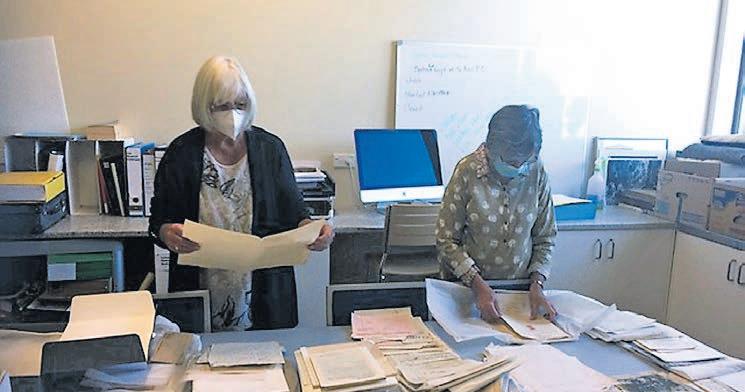

“Mangawhai Museum has more than 80 people giving thousands of hours of volunteer service every year,” says museum manager Tom Long.
“I am the only full-time staff person at the museum and couldn’t achieve what we do without our team, who give up their time every day. We have a wide variety of things happening, including visits from schools, setting up displays and live nights.
“It is the volunteers who drive the museum — I can only help coordinate what happens. Our oldest volunteer Lou is 94, and he is one of our most dependable team members. He helps in front of house and greeting people.
“The team say they love so many things about volunteering, including the social atmosphere. Seniors around the world are in great danger of isolation, and volunteering helps prevent that. They work in groups such as fundraising and genealogy, and every month we have an appreciation tea together.”
Volunteers find their work is purposeful, and they are able to share their knowledge and history that they learn.


“It is thrilling for them to have an element of service. People find helping at the museum gives them purpose, and they get to collect and share stories and knowledge. Service has been on my mind since the Queen died. I always admired
her dedication and how she put her duty before everything else, and to a certain scale, that’s what I see here, volunteers put what needs to be done ahead of themselves, and that is inspiring.
“Everyone does what they do to be a part of community, and looking at past and present exhibits, I have learned that that is a big part of Mangawhai. People here have a get-it-done attitude.


“We have our AGM set for July 1, and our next Magic in Mangawhai bus tour is coming on July 18. The tour is a package we put together with the Mangawhai Tavern, Bennetts Cafe and the art gallery. People come on a bus tour, visit the museum and have tea and scones, have lunch at the tavern,
visit Bennetts and the art gallery and head home. It has proven to be a great thing, and bookings have doubled since last year.
“Our next live night is on July 21, with the staff dressing in historical costumes, and families love it. It costs the normal admission of $12 an adult or $20 a family, and friends of the museum come for free.
“The surf life saving display ends on August 27, and then we will have the R Tucker Thompson exhibit. It is a scale replica of the whole ship, which is over two metres long. The display is about building, community, ships, character and dreams and how people achieve their dreams and grow.”
30 Fold mark (6) 31 Knife-sharpening rod (5)
32 Puma (6)
34 Engrave with acid (4)
36 Large and heavy (5)
38 Effrontery (5)
40 Cover on a healing cut (4) 45 Money resources (5)
46 Sell to bidders (7)
47 Front part (4)
48 Filter out (6)
49 Stay clear of (5)
50 Suggest (7)
52 Bankruptcy (10)
53 Of plants (7)
54 Polish port (6)
55 Scottish city (7)
56 Announce (5)
57 Fencing sword (4)
62 Muzzle (5)
67 EEC ring (anag)(7)
68 Sadism (7)
70 Advantage (7)
Last week’s crossword solution
ACROSS: 1 Equip, 4 Have a roving eye, 11 Aunts, 14 Wings, 15 Watercolour, 16 Scimitar, 19 Shotgun, 20 Under, 21 Focussing, 24 Desirable, 26 Acidic, 27 Escape, 31 Sneer, 32 Consumer, 34 Challenger, 38 Curator, 39 Fabric, 40 Alerts, 41 Haul, 42 Mystery, 45 Deportment, 50 Rapidly, 54 Glow, 55 Sculpt, 56 Prized, 57 Cologne, 60 Locomotive, 61 Illusion, 62 Hitch, 65 Resign, 66 Orchid, 67 Diaphragm, 72 Rationale, 73 Broke, 74 Abolish, 79 Bearings, 80 Disobedient, 81 Ocean, 82 Wring, 83 The third degree, 84 Elder.
DOWN: 2 Quiche, 3 Ingot, 5 Afar, 6 Eternal, 7 Rocket, 8 Vile, 9 Neurosis, 10 Excess, 11 Administer, 12 Note, 13 Scrooge, 17 Pupil, 18 Punishment, 22 Rayon, 23 Vanguard, 25 Elegant, 26 Apricot, 28 Unruly, 29 Embryo, 30 Slater, 33 Suave, 35 Rally, 36 Tour, 37 Fade, 42 Mogul, 43 Showcase, 44 Yachts, 45 Delivering, 46 Pets, 47 Replied, 48 Mainly, 49 Needs, 51 Ahoy, 52 Ironing, 53 Lunacy, 58 Emigrating, 59 Coupé, 63 Childish, 64 Probe, 65 Rainbow, 68 Inkling, 69 Fidget, 70 Friend, 71 Estate, 75 Local, 76 Sari, 77 Door, 78 Knee.
Building
Kiwi homes for the Kiwis round here

Show home: 7 Sandford Road, Ruakaka




Open: Mon to Fri 8.30am - 4pm, Saturday 10am - 2pm


Contact: Steve Hart 09 433 0200 | a1northland@A1homes.co.nz

